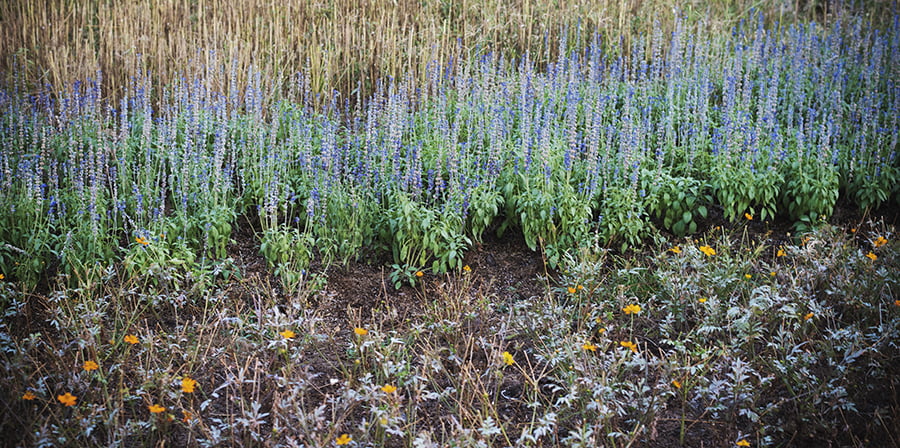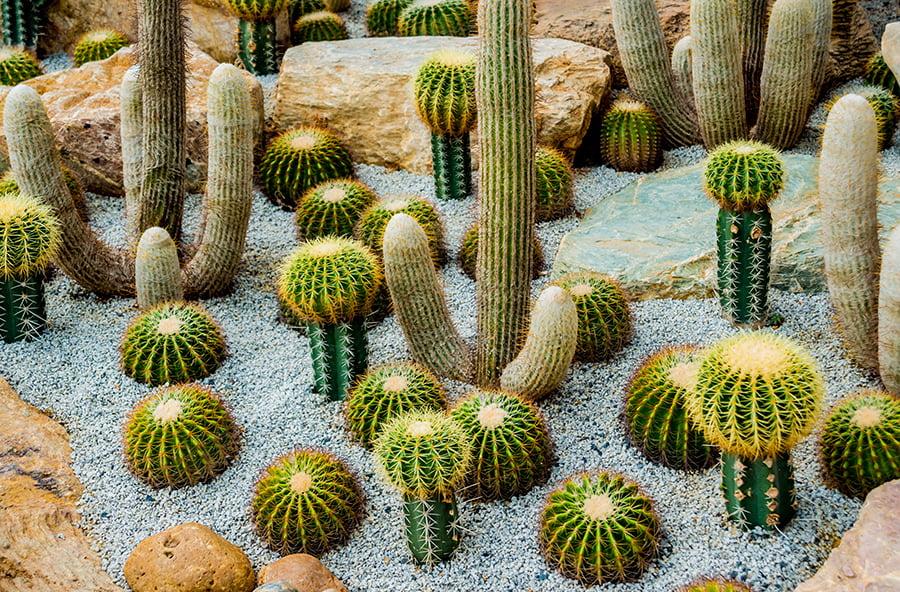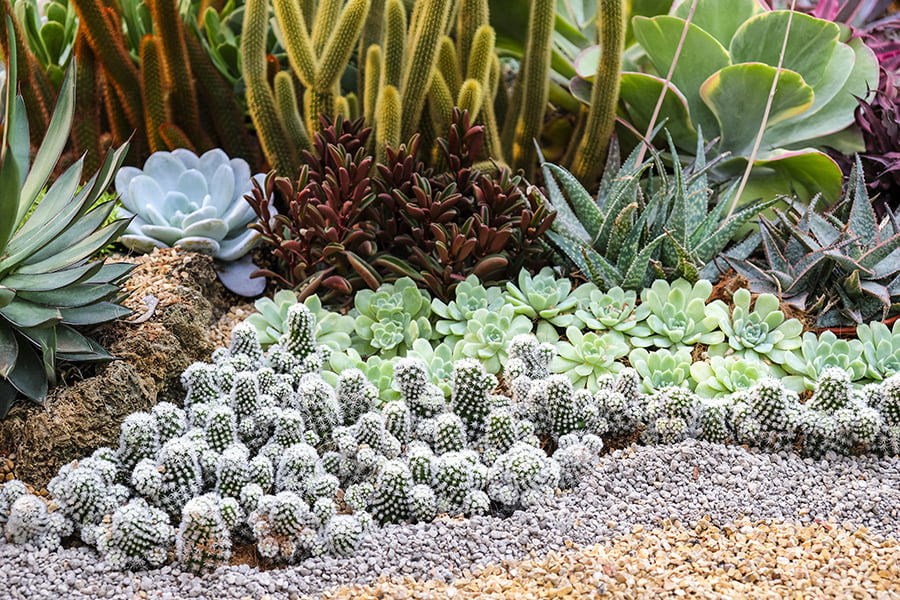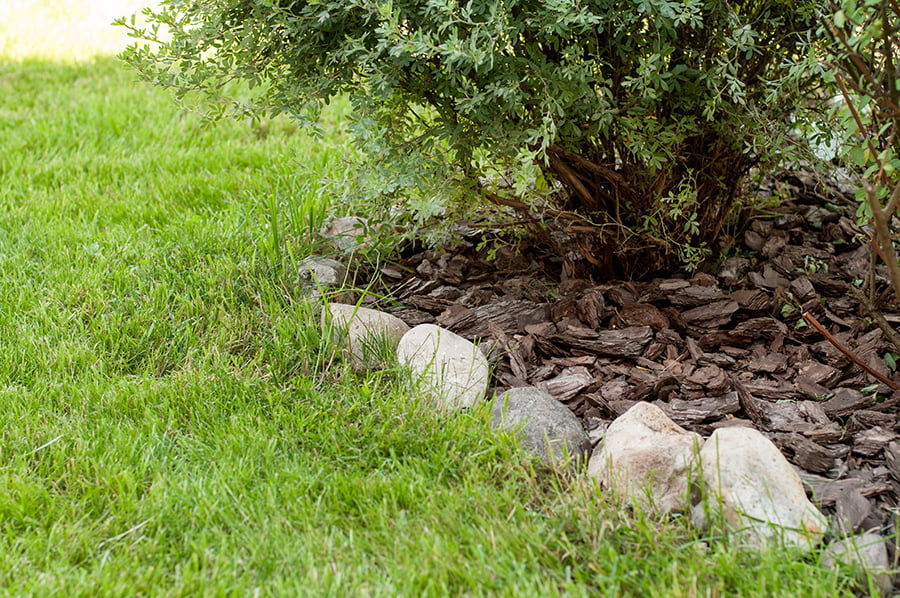Welcome to our comprehensive guide on landscaping services in Las Vegas, where you’ll learn about local design trends, plant selection, and professional services to transform your outdoor space into a desert oasis.
Key takeaways:
- Landscaping in Las Vegas requires heat-tolerant plants and efficient irrigation.
- Water-efficient techniques like xeriscaping and drip irrigation are essential.
- Landscape design should consider extreme heat and use light-colored materials.
- Native plants are a practical and low-maintenance choice for Las Vegas landscapes.
- Proper installation, irrigation, and maintenance are crucial for thriving gardens.
Unique Challenges of Landscaping in Las Vegas

Las Vegas’s desert climate brings with it a set of challenges that make landscaping a task for the knowledgeable and the resourceful. With scorching temperatures often soaring above 100 degrees in summer months, plants and turf that require cool or temperate environments simply won’t thrive here. Gardeners must consider heat tolerance carefully when selecting flora for their outdoor spaces.
Water scarcity is another significant hurdle. Nevada is among the driest states in the U.S., and in response, Las Vegas has implemented strict water usage regulations. This means traditional, water-intensive lawns and gardens are often not viable or legal. Landscapers must turn to drought-resistant plants and innovative irrigation systems that maximize efficiency and minimize waste.
The soil in the region is also notably different from more temperate areas. It’s often alkaline, compacted, and low in organic matter, which can inhibit plant growth. Amending the soil to create a more conducive environment for plant roots is crucial, but it requires in-depth knowledge of soil chemistry and an investment in the right materials.
Finally, the intensity of the sun in Las Vegas can be tough not only on plants but also on hardscape materials. Heat can cause certain materials to fade, crack, or degrade more quickly than in milder climates. When designing outdoor living spaces, the choice of materials has to reflect an understanding of how they will stand up to the relentless Vegas sun.
These factors combined make landscaping in Las Vegas a unique challenge that demands creativity, sustainability, and a willingness to work with the environment rather than against it.
Water-Efficient Landscaping Techniques
Achieving a lush, attractive landscape in Las Vegas doesn’t need to come at the expense of excessive water use. By embracing water-efficient techniques, homeowners can enjoy verdant outdoor spaces while conserving this precious resource.
Incorporating xeriscaping principles is a foundational step. This approach involves selecting drought-tolerant plants that require minimal irrigation beyond natural precipitation. Succulents and cacti are not just native adaptations; they’re also stylish, adding aesthetic appeal with their diverse shapes and sizes.
Utilizing drip irrigation systems instead of traditional sprinklers can significantly reduce water waste. These systems deliver water directly to the base of plants, minimizing evaporation and ensuring deeper watering that promotes stronger root growth.
Another effective strategy is to apply mulch around plants. Mulch helps retain soil moisture, reducing the frequency of watering needed. It also doubles as a way to suppress weeds that compete with your plants for water.
Lastly, grouping plants with similar water needs together creates a more efficient watering zone. This method ensures that only the plants that require it receive additional watering, rather than applying a uniform amount of water across all landscape elements.
By adopting these practices, it’s entirely possible to maintain an inviting landscape in Las Vegas while also being mindful of water usage and sustainability.
Landscape Design Considerations for Extreme Heat
Devising a landscape design that can endure the scorching temperatures of Las Vegas requires ingenuity and strategic planning. A crucial aspect to consider is the orientation of outdoor spaces. Patios and rest areas should be positioned to benefit from afternoon shade, either from existing structures or through the intentional planting of shade-providing trees.
Materials are also a pivotal factor. Opt for light-colored hardscaping that reflects rather than absorbs heat to keep walkways and patios more comfortable underfoot. Similarly, using reflective mulches in plant beddings can minimize heat stress on plants and help retain soil moisture.
Incorporating heat-resistant plants is essential. Species that thrive in high temperatures and can tolerate direct sunlight for most of the day are ideal. Furthermore, grouping plants with similar water and sun requirements can increase the efficiency of your landscape and lead to healthier growth.
Irrigation systems need to be carefully tailored to the environment. Drip irrigation can deliver water directly to the plants’ roots, and scheduling watering times for the early morning or evening reduces evaporation. Advanced systems can even adjust watering based on weather conditions to ensure optimal hydration without waste.
Native Plants for Las Vegas Landscapes
Incorporating native plants into your landscape provides a practical solution tailored to the desert environment. These species are adapted to survive in the harsh climate of Las Vegas with minimal water and care.
Among the top choices are the vibrant Desert Marigold, which brings a cheerful yellow bloom almost year-round. Joshua Trees, with their unique structure, make a bold statement in any yard. For groundcover, consider the durable and evergreen Creosote Bush, which has the added benefit of a pleasant fragrance after rain.
Red Yucca and Mojave Sage offer not only appealing aesthetics but also attract hummingbirds and other local wildlife, creating a dynamic ecosystem right in your backyard. When selecting these plants, consulting with a local nursery can provide valuable insights into the best choices for your specific landscape needs.
By choosing native plants, you’re not only designing a beautiful, low-maintenance yard but also conserving water and supporting the local habitat. These plants often require less fertilizer and fewer pesticides, reducing your environmental footprint and making your garden a natural extension of the surrounding desert.
Landscape Installation and Maintenance Best Practices
Ensuring your Las Vegas landscape looks its best year-round is a commitment that requires careful planning and diligent upkeep. Despite the dry climate, with the right strategies, your garden can thrive.
Firstly, it’s essential to have a thorough installation plan. This should include proper grading for drainage to prevent water from pooling and damaging your plants. Equally, the soil should be amended, especially in Las Vegas’s arid conditions, to provide the necessary nutrients for plant health and water retention.
Irrigation systems are next on the list. In a water-conscious area, drip irrigation is a smart choice. It delivers water directly to the roots of your plants, reducing evaporation and encouraging deep root growth, leading to more resilient plants.
Pruning is another vital aspect of maintenance. It not only keeps your garden tidy but also promotes healthy growth and prevents disease. Remember to prune at the right time of year for each plant species to receive the best results.
Mulching serves multiple purposes. It conserves moisture, regulates soil temperature, and adds an aesthetic finish to your garden beds. In the Las Vegas heat, a layer of mulch can make a substantial difference in the vitality of your plants.
Regular weeding is unavoidable. It ensures that your plants aren’t competing for nutrients and water. A well-maintained garden will also be more resistant to pests and diseases.
Lastly, it’s important to monitor your plants for signs of stress. In Las Vegas’s extreme environment, quick action can save a plant that’s struggling with heat or drought.
By applying these best practices, your desert landscape will not only turn heads but also sustain its beauty even in the challenging Las Vegas weather.




